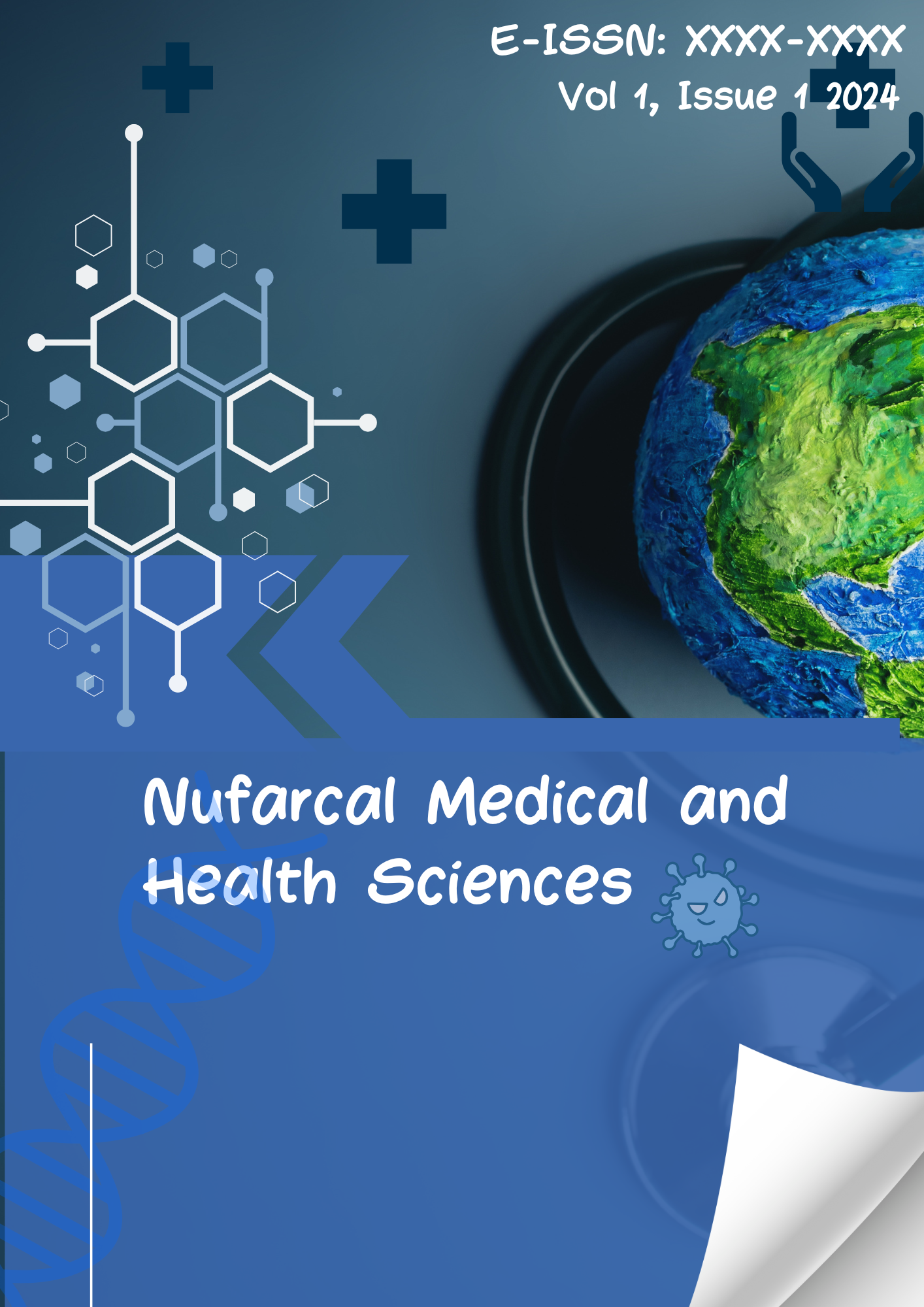The Impact of Digital Intervention Programs on Improving Medication Adherence Among Chronic Disease Patients in Urban Areas
Keywords:
Digital Health Interventions, Medication Adherence, Chronic Disease Management, Urban Healthcare, Mixed-Methods ResearchAbstract
Purpose: This study aimed to evaluate the impact of a digital health intervention on medication adherence among chronic disease patients in an urban setting, addressing behavioral, technological, and systemic factors that influence adherence.
Subjects and Methods: A mixed-methods approach was used, combining quantitative analysis of adherence levels before and after implementation of the digital tool with qualitative insights gathered through interviews with 20 patients and 10 healthcare providers.
Results: Quantitative results demonstrated significant improvements in adherence levels, with significant increases in patient adherence over three months. Qualitative findings revealed key barriers, including forgetfulness, limited access to technology, and lack of integration with electronic health records.
Conclusions: These findings highlight the need for a holistic strategy that combines inclusive design, caregiver support, and system-level integration to optimize the effectiveness of digital health interventions. This study provides valuable insights to improve the scalability and equity of digital solutions for chronic disease management.
References
Baker-Smith, C. M., Sood, E., Prospero, C., Zadokar, V., & Srivastava, S. (2021). Impact of social determinants and digital literacy on telehealth acceptance for pediatric cardiology care delivery during the early phase of the COVID-19 pandemic. The Journal of pediatrics, 237, 115-124. https://doi.org/10.1016/j.jpeds.2021.06.036
Basu, S., Yudkin, J. S., Kehlenbrink, S., Davies, J. I., Wild, S. H., Lipska, K. J., ... & Beran, D. (2019). Estimation of global insulin use for type 2 diabetes, 2018–30: a microsimulation analysis. The lancet Diabetes & endocrinology, 7(1), 25-33.
Benyam, A. A., Soma, T., & Fraser, E. (2021). Digital agricultural technologies for food loss and waste prevention and reduction: Global trends, adoption opportunities and barriers. Journal of Cleaner Production, 323, 129099. https://doi.org/10.1016/j.jclepro.2021.129099
Choudhury, A., Magill, S. T., Eaton, C. D., Prager, B. C., Chen, W. C., Cady, M. A., ... & Raleigh, D. R. (2022). Meningioma DNA methylation groups identify biological drivers and therapeutic vulnerabilities. Nature genetics, 54(5), 649-659. https://doi.org/10.1038/s41588-022-01061-8
Farmer, R., Fields, C. E., Petermann, I., Dessart, L., Cantiello, M., Paxton, B., & Timmes, F. X. (2016). On variations of pre-supernova model properties. The Astrophysical Journal Supplement Series, 227(2), 22. https://doi.org/10.3847/1538-4365/227/2/22
Glasgow, R. E., Knoepke, C. E., Magid, D., Grunwald, G. K., Glorioso, T. J., Waughtal, J., ... & Ho, P. M. (2021). The NUDGE trial pragmatic trial to enhance cardiovascular medication adherence: study protocol for a randomized controlled trial. Trials, 22(1), 528. https://doi.org/10.1186/s13063-021-05453-9
Gruet, M., Saynor, Z. L., Urquhart, D. S., & Radtke, T. (2022). Rethinking physical exercise training in the modern era of cystic fibrosis: a step towards optimising short-term efficacy and long-term engagement. Journal of Cystic Fibrosis, 21(2), e83-e98. https://doi.org/10.1016/j.jcf.2021.08.004
Herd, P., & Moynihan, D. (2020). Administrative burdens in health policy. Journal of Health and Human Services Administration, 43(1), 3-16. https://doi.org/10.37808/jhhsa.43.1.2
Holbrook, A. M., Wang, M., Lee, M., Chen, Z., Garcia, M., Nguyen, L., ... & Law, M. R. (2021). Cost-related medication nonadherence in Canada: a systematic review of prevalence, predictors, and clinical impact. Systematic reviews, 10, 1-13. https://doi.org/10.1186/s13643-020-01558-5
Horvat, M., Eržen, I., & Vrbnjak, D. (2024, August). Barriers and facilitators to medication adherence among the vulnerable elderly: a focus group study. In Healthcare (Vol. 12, No. 17, p. 1723). MDPI. https://doi.org/10.3390/healthcare12171723
Kim, M. T., Heitkemper, E. M., Hébert, E. T., Hecht, J., Crawford, A., Nnaka, T., ... & Radhakrishnan, K. (2022). Redesigning culturally tailored intervention in the precision health era: Self-management science context. Nursing outlook, 70(5), 710-724. https://doi.org/10.1016/j.outlook.2022.05.015
Krick, T., Huter, K., Domhoff, D., Schmidt, A., Rothgang, H., & Wolf-Ostermann, K. (2019). Digital technology and nursing care: a scoping review on acceptance, effectiveness and efficiency studies of informal and formal care technologies. BMC health services research, 19, 1-15. https://doi.org/10.1186/s12913-019-4238-3
Kumar, Y., Koul, A., Singla, R., & Ijaz, M. F. (2023). Artificial intelligence in disease diagnosis: a systematic literature review, synthesizing framework and future research agenda. Journal of ambient intelligence and humanized computing, 14(7), 8459-8486. https://doi.org/10.1007/s12652-021-03612-z
Kvarnström, K., Westerholm, A., Airaksinen, M., & Liira, H. (2021). Factors contributing to medication adherence in patients with a chronic condition: a scoping review of qualitative research. Pharmaceutics, 13(7), 1100. https://doi.org/10.3390/pharmaceutics13071100
Mahmood, A., Nayak, P., Deshmukh, A., English, C., Manikandan, N., Solomon, J., & Unnikrishnan, B. (2023). Measurement, determinants, barriers, and interventions for exercise adherence: A scoping review. Journal of Bodywork and Movement Therapies, 33, 95-105. https://doi.org/10.1016/j.jbmt.2022.09.014
Murali, K. M., & Lonergan, M. (2020, November). Breaking the adherence barriers: Strategies to improve treatment adherence in dialysis patients. In Seminars in Dialysis (Vol. 33, No. 6, pp. 475-485). https://doi.org/10.1111/sdi.12925
Murray, C. E., Stanimirović, S., Goss, W. M., Heiles, C., Dickey, J. M., Babler, B., & Kim, C. G. (2018). The 21-SPONGE H i Absorption Line Survey. I. The Temperature of Galactic H i. The Astrophysical Journal Supplement Series, 238(2), 14.
Nguyen, N. T., Wereley, S. T., & Shaegh, S. A. M. (2019). Fundamentals and applications of microfluidics. Artech house.
Nguyen, N. T., Wereley, S. T., & Shaegh, S. A. M. (2019). Fundamentals and applications of microfluidics. Artech house.
Paiva, S., Ahad, M. A., Tripathi, G., Feroz, N., & Casalino, G. (2021). Enabling technologies for urban smart mobility: Recent trends, opportunities and challenges. Sensors, 21(6), 2143. https://doi.org/10.3390/s21062143
Rohde, D., Vandoorne, K., Lee, I. H., Grune, J., Zhang, S., McAlpine, C. S., ... & Nahrendorf, M. (2022). Bone marrow endothelial dysfunction promotes myeloid cell expansion in cardiovascular disease. Nature cardiovascular research, 1(1), 28-44. https://doi.org/10.1038/s44161-021-00002-8
Rosenstock, I. M. (1974). The health belief model and preventive health behavior. Health education monographs, 2(4), 354-386. https://doi.org/10.1177/109019817400200405
Rubbio, I., Bruccoleri, M., Pietrosi, A., & Ragonese, B. (2020). Digital health technology enhances resilient behaviour: evidence from the ward. International Journal of Operations & Production Management, 40(1), 34-67. https://doi.org/10.1108/IJOPM-02-2018-0057
Singh, H., & Sittig, D. F. (2020). A sociotechnical framework for safety-related electronic health record research reporting: the SAFER reporting framework. Annals of Internal Medicine, 172(11_Supplement), S92-S100. https://doi.org/10.7326/M19-0879
Turakhia, M., Sundaram, V., Smith, S. N., Ding, V., Ho, P. M., Kowey, P. R., ... & smartADHERE Investigators. (2021). Efficacy of a centralized, blended electronic, and human intervention to improve direct oral anticoagulant adherence: Smartphones to improve rivaroxaban ADHEREnce in atrial fibrillation (SmartADHERE) a randomized clinical trial. American heart journal, 237, 68-78. https://doi.org/10.1016/j.ahj.2021.02.023
Van der Kleij, S. W., Segers, E., Groen, M. A., & Verhoeven, L. (2019). Post-treatment reading development in children with dyslexia: The challenge remains. Annals of Dyslexia, 69, 279-296. https://doi.org/10.1007/s11881-019-00186-6
Venkatesh, V. (2022). Adoption and use of AI tools: a research agenda grounded in UTAUT. Annals of Operations Research, 308(1), 641-652. https://doi.org/10.1007/s10479-020-03918-9
Viswanath, K. K., Varakumar, P., Pamuru, R. R., Basha, S. J., Mehta, S., & Rao, A. D. (2020). Plant lipoxygenases and their role in plant physiology. Journal of Plant Biology, 63, 83-95. https://doi.org/10.1007/s12374-020-09241-x
Zullig, K. J., Lander, L. R., Tuscano, M., Garland, M., Hobbs, G. R., & Faulkenberry, L. (2021). Testing Mindfulness-Based Relapse Prevention with medications for opioid use disorder among adults in outpatient therapy: A quasi-experimental study. Mindfulness, 12, 3036-3046. https://doi.org/10.1007/s12671-021-01763-w
Downloads
Published
Issue
Section
License
Copyright (c) 2024 Nufarcal Medical and Health Sciences

This work is licensed under a Creative Commons Attribution-ShareAlike 4.0 International License.







